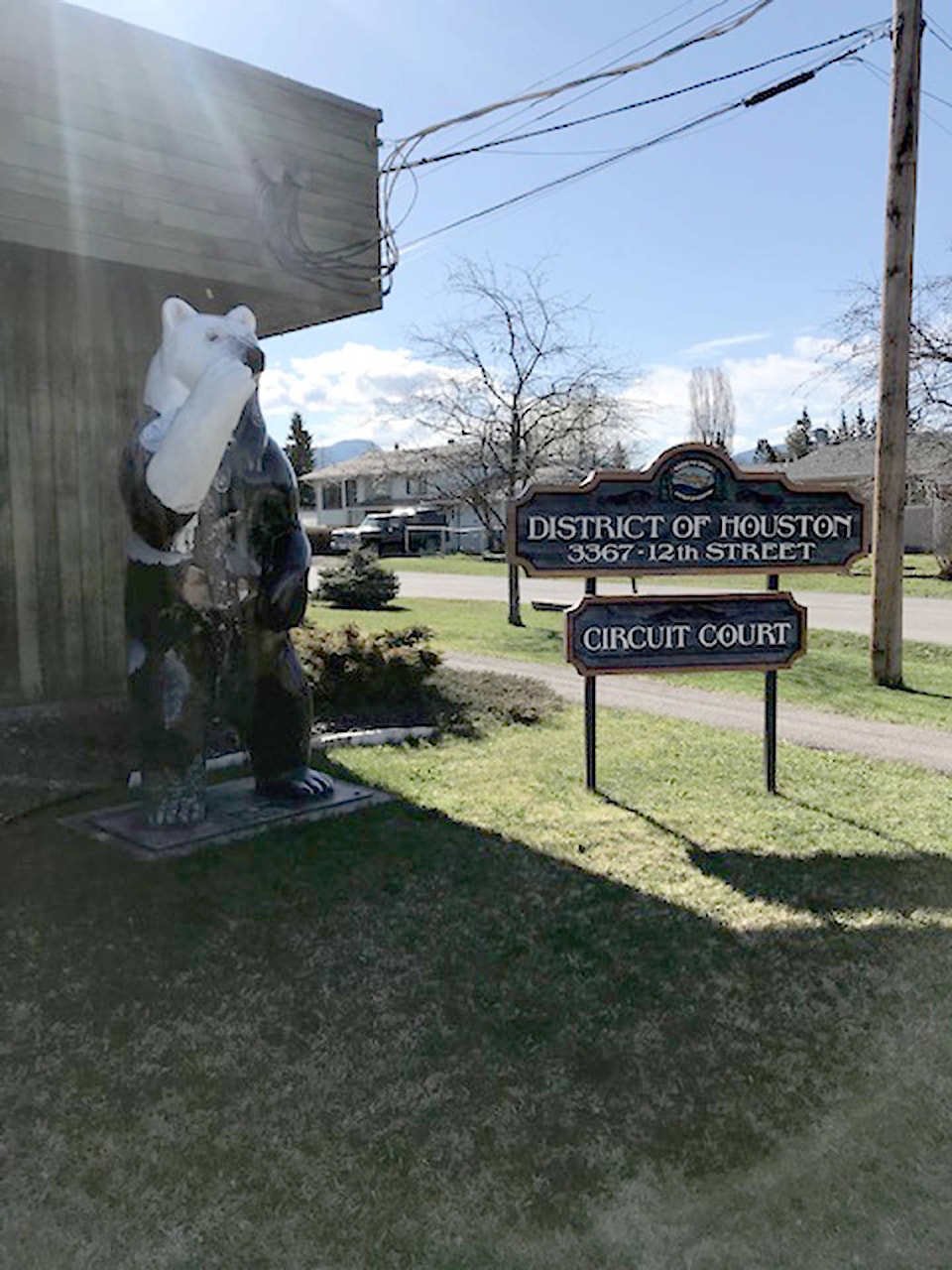The District of Houston council has approved a 2019 budget calling for a modest increase in overall taxation revenues.
But its financial plan also features a dramatic increase in capital project spending owing to grants from other sources.
Thanks to the influx in those grants from outside sources, the District’s planned expenditures this year amount to $18.034 million, a jump over the 2018 spending plan of $11.771 million.
A portion of the total grant revenue this year comes from the $4.486 million the District received earlier this year from the provincial government’s one-time $100 million Northern Capital and Planning Grant distribution and there’s an anticipated $1 million from the provincial Forest Enhancement Society of B.C. to remove forest fuels and so reduce fire danger.
In setting out its taxation levels for this year, the District kept to its policy of having a set percentage of taxation revenues coming from within each of its property classifications.
That meant, for example, keeping to the goal of residential taxation contributing 31 per cent of the overall total.
And in following its five-year financial planning scenario, the District council approved an overall tax hike of 2.7 per cent.
That amounts to an additional $109,000 but because of a reduction within the one percent utility tax structure of $30,913 the actual net taxation increase amounts to $78,101 for a net taxation revenue increase to $4.287 million this year or a 1.86 increase from 2018.
Using the BC Assessment Authority’s revised data, an average single family dwelling of $150,958.56 in assessed value can expect a property tax notice for municipal purposes for $1,057.33, representing a $16.45 increase from last year, explained District of Houston chief administrative officer Gerald Pinchbeck.
“The tax increase ensures adequate funding to support regular maintenance to the District’s roads, sidewalks, recreational facilities, parks and other infrastructure,” he said.
There are also plans to transfer $302,710 to municipal reserves to buffer the anticipated impact of major infrastructure work in the years head, Pinchbeck added.
Assessments within the heavy industrial classification increased $1.49 million and with a tax rate of $76.34 per thousand dollars of assessed value, the district is pegging a tax intake of $1,539,121 which is an increase of 2.7 per cent.
Heavy industrial taxation represents 37 per cent of the total taxation revenue.
The District did adjust its light industrial rate through an increase of $8 per $1,000 of assessed value to maintain this classification’s percentage contribution of 11.2 per cent to overall taxation revenue.
That’s because taxable assessments within this category dropped by $700,000 from 2018 to this year, said Pinchbeck.
“The main factor affecting this was a decrease of $510,000 in one folio [or property] for the 2018 assessed value as a result of an assessment appeal, which impacted the assessment for 2019,” said Pinchbeck.
Information through the provincial assessment appeal board indicates Canfor successfully appealed a light industrial assessment total of $4.443 million resulting in a $510,000 drop to $3.933 million.
The anticipated light industrial classification tax total for this year is $464,30 or $7,339 more than last year for an increase of 1.6 per cent, said Pinchbeck.
The business/other classification rate for this year is $21.318 per thousand dollars of assessed value compared to $21.025 last year.
Untouched, at least for this year, are various fees and charges levied by the District for water, sewer, recreation and other services.
“But Council has discussed reviewing user fees going forward to ensure that our cost recovery targets of 100 per cent for utilities (water, sewer, garbage) and 30 per cent for recreation services remain sustainable,” said Pinchbeck.
The above figures are for municipal revenues only and do not include taxes for services and other government agencies such as policing, the Regional District of Bulkley-Nechako or the North West Regional Hospital District.
When all of the above are included, the residential rate for 2019 is $11.65 per thousand dollars of assessed value compared to $11.83 in 2018.
Policing services, for instanced, were pegged at 40 cents per thousand dollars of assessed value this year and were 39 cents last year.
